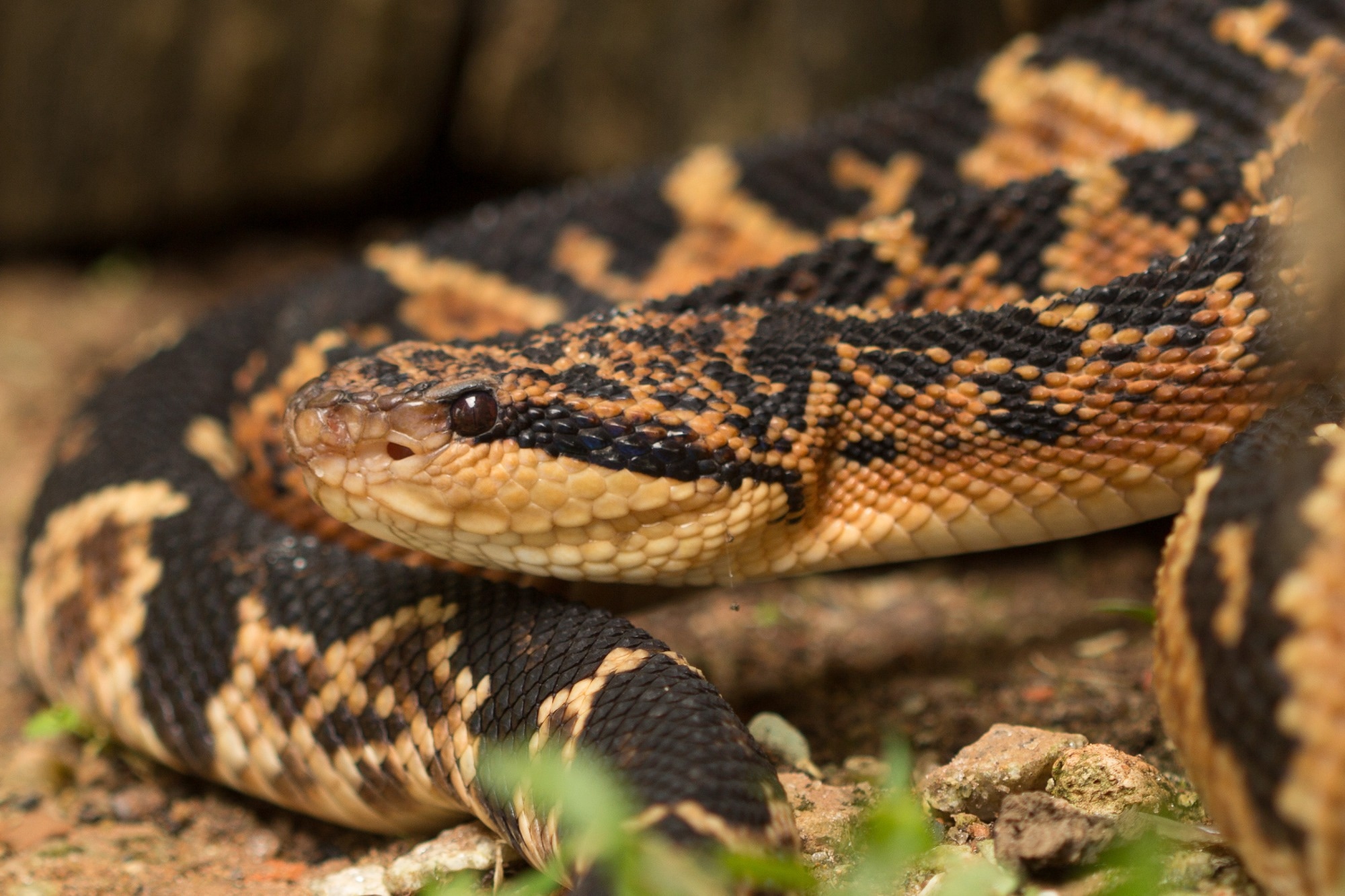The venom of the South American bushmaster, a resident of tropical rainforests, and the pit viper Cotiara, which lives in southern Brazil, both contain fragments of hemorrhagic toxins that may be used to treat high blood pressure. The compounds may eventually find application in medications with less unfavorable side effects.
 The venom of the South American bushmaster (Lachesis muta) is not especially powerful, but the snake is dangerous because of the large amount of venom it injects into its victims. Image Credit: Sávio Stefanini Sant’ Anna/Instituto Butantan
The venom of the South American bushmaster (Lachesis muta) is not especially powerful, but the snake is dangerous because of the large amount of venom it injects into its victims. Image Credit: Sávio Stefanini Sant’ Anna/Instituto Butantan
Venoms from Brazilian snakes and spiders are still a source of novel findings with potential applications in biotechnology. This is conceivable even in relatively well-studied species like the South American bushmaster (Lachesis muta) and lancehead pit viper Cotiara (Bothrops cotiara), according to two recently published research funded by FAPESP.
Venoms never cease to surprise us. Even with so much accumulated knowledge, fresh discoveries are possible, such as unpredictable fragments that are parts of known proteins. Despite all the available technology, a great deal remains to be studied in these toxins.”
Alexandre Tashima, Professor and Principal Investigator, Federal University of São Paulo’s Medical School
Tashima comments on Bc-7a, a unique peptide (protein fragment) found in the venom of B. cotiara. While it is a component of a protein that makes the snake's prey bleed, from a functional standpoint, it is more similar to peptides found in captopril, a medication that reduces blood pressure by blocking the action of the angiotensin-converting enzyme (ACE).
An article published in the journal Biochimie details the results of the most recent investigation. There are already many ACE-inhibiting compounds on the market, but due to unfavorable side effects such as dry cough, vertigo, and elevated blood potassium levels, research is still being done.
The study identified 197 peptides, 189 of which were published for the first time. The same snake's venom was confirmed to have 73 peptides by the team in 2012. The scientists attribute the difference to the use of faster and more sensitive technology in the more recent study compared to what was available 10 years ago, as well as the increased amount of peptide sequences that can now be extracted from databases.
Tashima and his team had previously discovered compounds with biotechnological promise in the venom of two tarantula spiders and another snake.
Bushmaster
In a study using L. muta bushmaster venom, 151 peptides—126 of which had not been previously identified—were found. The results were published in the journal Biochemical and Biophysical Research Communications.
The new metalloproteinase-derived peptide Lm-10a, which is a hemorrhagic toxin fragment that inhibits ACE and may find application in blood pressure medication development, piqued the curiosity of the researchers. According to their investigation, the venom gland of the snake fragmented throughout the process of producing Lm-10a from L. muta and Bc-7a from B. cotiara, and many additional new peptides could be extracted from the poisons.
In this kind of analysis, the protein sequence obtained is just a snapshot. Cleavage, enzymatic degradation, and other processes generating novel peptides that aren’t necessarily detected occur all the time.”
Alexandre Tashima, Professor and Principal Investigator, Federal University of São Paulo’s Medical School
To confirm the true potential of the peptides they found, more investigation is required. Furthermore, the dynamic nature of toxin maturation suggests that venomous snakes have evolved to modify their venom through the employment of a variety of biological mechanisms.
Tashima said, “Despite advances in sequencing technology and the production of large amounts of data in recent years, much remains to be discovered about the vast universe of peptides and their biological roles. We must take advantage of our good fortune in being able to study these species, many of which will be extinct before they’ve even been discovered.”
Source:
Journal reference:
Miyamoto, J. G., et.al., (2024). A novel metalloproteinase-derived cryptide from Bothrops cotiara venom inhibits angiotensin-converting enzyme activity. Biochimie. doi.org/10.1016/j.biochi.2023.10.010.